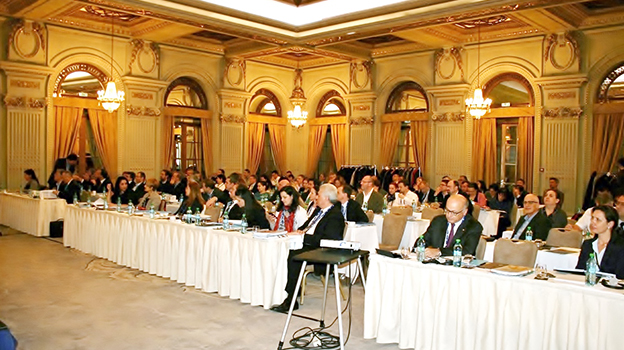FIRST FIDIC CONFERENCE IN ROMANIA
The first FIDIC Conference in Romania took place in 12-13 March 2015 at Athenee Palace Hilton Bucharest.
The Conference was organized by FIDIC in collaboration with ARIC and EFCA and raised a high interest having 100 participants and 40 speakers both Romanian and foreigners.
Through regionally and internationally recognized specialists European Commission’s officials, legal experts and FIDIC’s representatives, FIDIC-EFCA ARIC Regional Infrastructure Conference proposed to clarify a number of construction market’s specific issues and present current element and important development directions in areas such as: European funds for infrastructure, the evolution of FIDIC contracts and special conditions of the contract in the region, EU procurement regulations, the experience of other EU countries, prevention and settlement of claims, integrity in public procurement and contracts.
One of the main objectives of the conference was to highlight the main advantage of using FIDIC Conditions of Contract, namely the alignment with a strong international practice, based on a set of clear rules, ensuring objectivity and transparency so necessary to the use of public funds, in general, and of grants, in particular.
The Conference also managed to highlight that FIDIC contract forms can also be successfully used even in a market regulated mainly by public law. Contractors, consultants and public authorities are required to comply with the strict requirements of public law (either because the money came from public bodies such as the EU or state budget, either because such projects require the public authorities to be the main beneficiary), from the procurement to the takeover regulations, from the eligibility of costs to the enforcement of a DAB decision.
The presentations held configured the legislative framework – national and European – to be taken into account when using FIDIC Conditions of Contract in “public”.
One of the most important conclusions of the conference is that the problems identified are common to most countries in Central and Eastern Europe. As a consequence, the appropriate measures to be taken to correct the deficiencies noted, must also be common.












